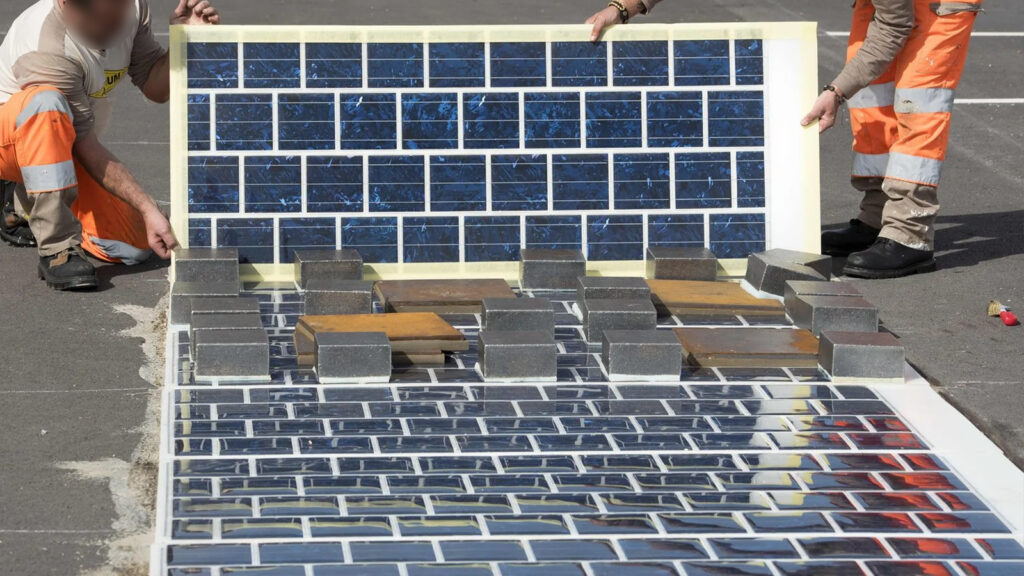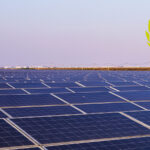Table of Contents for this article:
Solar Roads in France
Solar-powered bike lanes in Poland
Bicycle lanes in the Netherlands
Solar-powered sidewalks in the Netherlands
Solar Roads in Germany
At this stage, the EU has introduced a series of regulations to advocate countries to use solar energy to achieve energy transition. In addition to large photovoltaic power plants, household photovoltaic, some countries began to study the combination of photovoltaic and road projects, these cases have successes and failures. Read on to see if there have been such projects in your hometown.
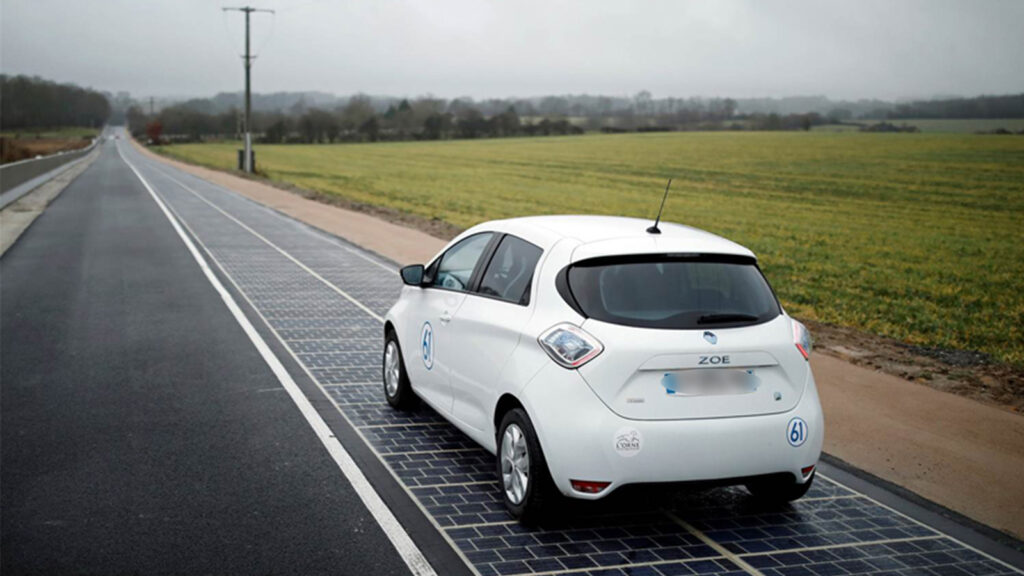
Solar roads in France
Back in 2016, the small town of Tourouvre in Normandy, located in northern France, built the practically first solar road called Wattway, which is 1 km long and covered with 2,800 square meters of photovoltaic panels. The panels are protected by a silicone layer that claims to be able to withstand about 2,000 cars per day running over them.
According to calculations by the French Environment and Energy Control Agency at the time, the 1-kilometer-long “solar road” could support the daily public lighting of a small town with 5,000 inhabitants. In addition, the “solar highway” can also be used for traffic lights, electric car charging stations, residential home electricity and other aspects of the transmission of electricity.
However, this 5 million euro project in the actual use of the process of various problems, we found that Normandy only 44 days a year with strong sunlight, power generation is far from the expected. Secondly cracks in the roads were everywhere and parts of the roads had to be removed in 2018 due to damage caused by wear and tear. As a result, the project was declared a failure in 2019.
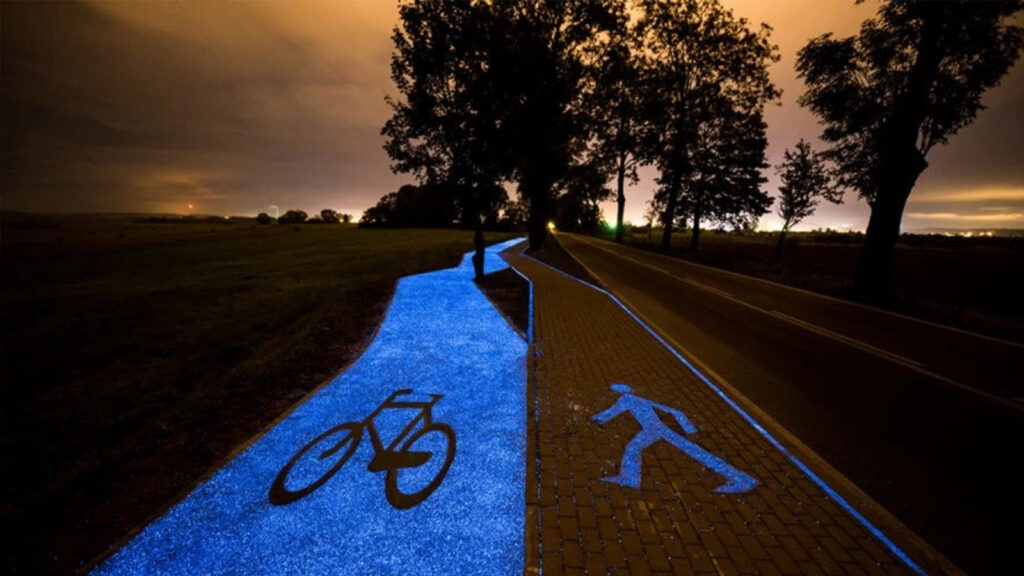
Solar bike lanes in Poland
Also in 2016, a bright blue bike lane was built in the northern Polish city of Liz Buck Warmiński. The road is made of synthetic materials and after absorbing a day’s worth of sunlight, the road can provide up to 10 hours of luminous lighting. While there has been a previous LED-lit bike lane in the Netherlands, this time the solar-powered lane in Poland is completely different, a form of true green.
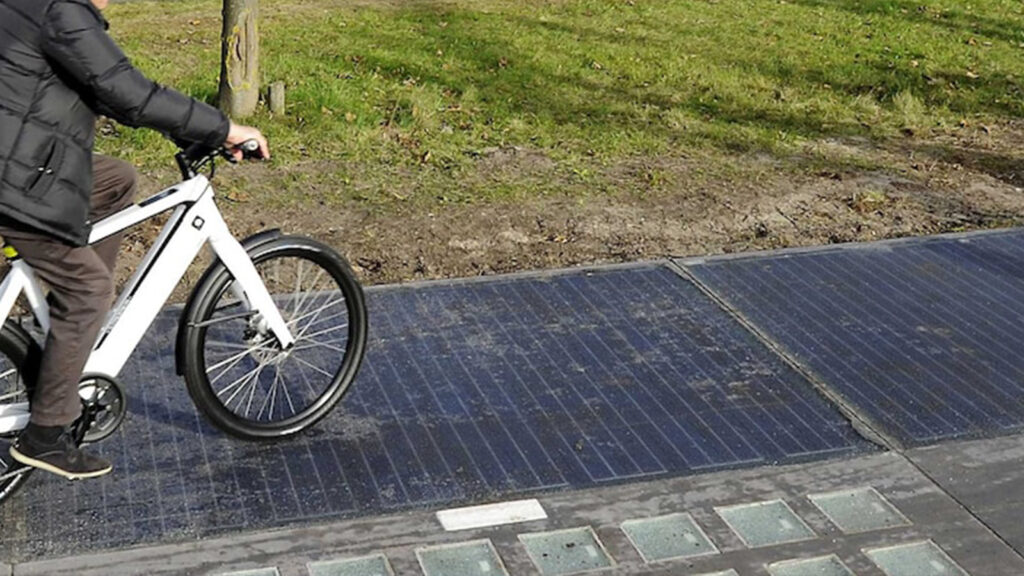
Solar bike lanes in the Netherlands
In addition to Poland, there are many similar bike lanes in the Netherlands. In 2020, for example, a bicycle lane was built in Provincie Utrecht that integrates solar panels and concrete lanes and is about 330 meters long.
This year, in particular, Noord-Brabant in the Netherlands announced that it will build a 500-meter long ground-level solar bike lane along the N285 provincial road near Wagenberg. And five years after completion to test the performance, it is expected to lay 600 solar panels on the tarmac. Over the five-year period, experts from the Dutch province will evaluate, among other things, the tolerance of the solar modules to mechanical stresses imposed by pedestrians and bicyclists, the maintenance costs of the photovoltaic system, and the amount of electricity generated. This is a Dutch government program to test the feasibility of solar power generation on road infrastructure. The program includes the deployment of solar installations along highways and noise barriers.
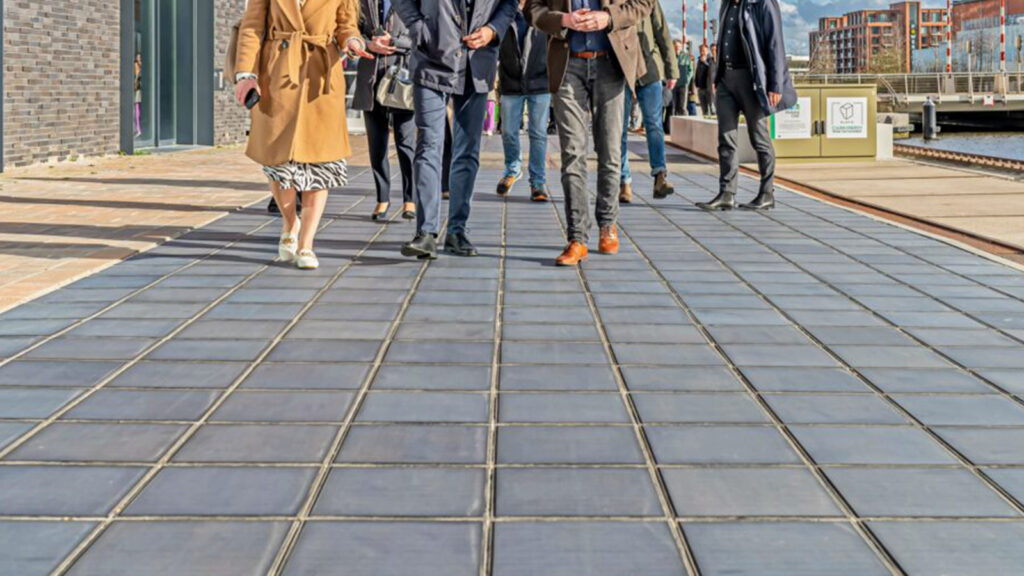
Solar-powered sidewalks in the Netherlands
In addition to bike lanes, about 400 square meters of solar-powered walkways were recently installed in Groningen, Netherlands, on a vandal-resistant road made of solar paving panels developed by the Hungarian company Platio. When it was opened on March 24, it reportedly generated enough electricity to power 47 Dutch houses for a day.
The solar walkway consists of 2,544 monocrystalline Patio solar paving panels with an efficiency rating of 21.8 percent and is claimed to be able to withstand 2 tons of pressure without micro-cracks. It will generate 55,000 kWh of electricity per year for use at Groningen’s town hall.
Due to scarce land resources, the Dutch authorities are struggling to find available ground for the deployment of large PV plants. In recent years, research institutes and private companies have tried to demonstrate the feasibility of building solar projects on non-agricultural land, including embankments, rooftops, and land and sea water.
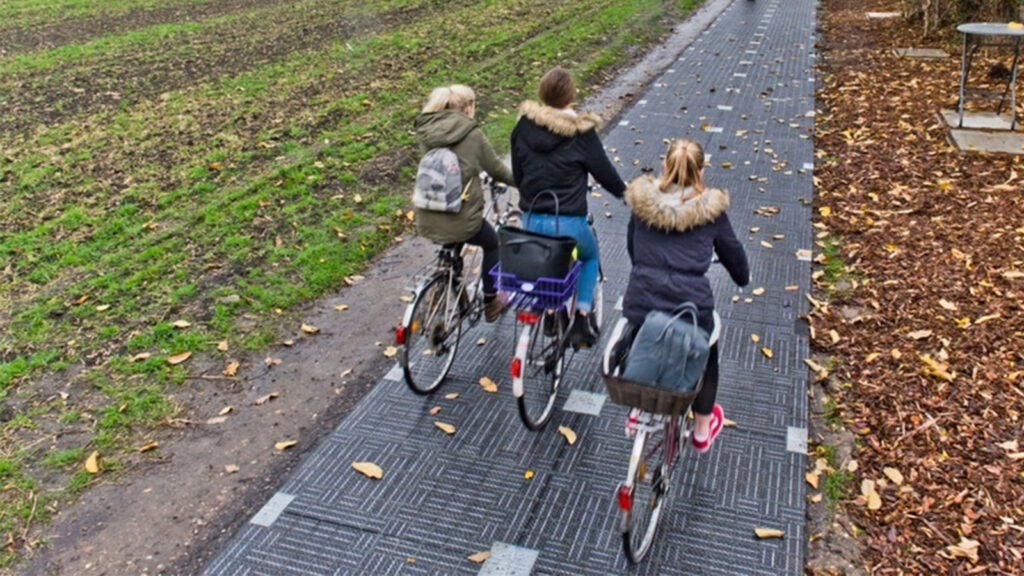
Solar roads in Germany
As a globally renowned automotive kingdom, tens of thousands of kilometers of highways traverse Germany. In fact, Germany is already experimenting with “solar highways” that combine roads with photovoltaic installations. in November 2018, the first solar highway in Germany was officially opened near Köln.
Although this solar road is only 90 meters, it is considered the road of the future in Germany. The road produces electricity, absorbs noise and in winter speeds up the melting of ice on the road. In addition, the surface of the road consists of many single crystals on which sensors can measure the traffic flow on the road and thus control the conversion of the signal lights.
But after a period of experimental operation, this solar road still needs further improvement.
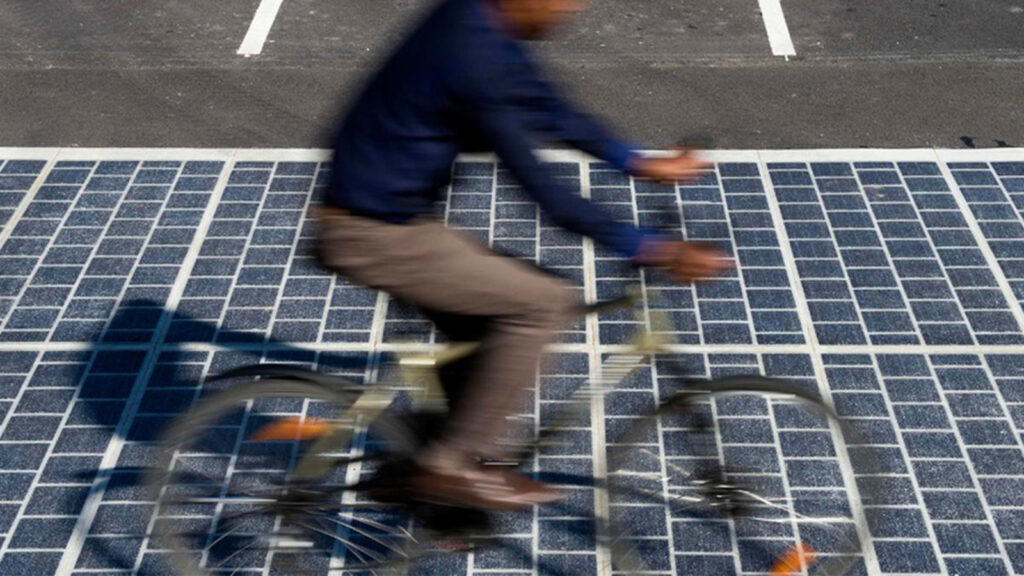
The various solar road trials conducted to date have revealed a number of problems. Solar energy is indeed the cleanest and most widely available green energy source today, but combining it with roads can create a variety of problems.
High costs are an inevitable focus, with solar roads built in many countries being very expensive, followed by engineers’ inability so far to create a solar panel that can withstand the pressure of multiple vehicles while remaining transparent enough for sunlight to enter.
Maysun solar has been focused on manufacturing high quality photovoltaic modules since its inception in 2008. Choose Maysun Solar because we have high quality solar panels to meet your needs, contact us and create a green future together!

Empowering Factories with Solar Energy A Strategic Tool for Controlling Production Electricity Costs
Commercial and industrial solar is becoming a key solution for factories to reduce electricity costs and hedge against price fluctuations. This article systematically analyzes its deployment models, cost advantages, and sustainable value pathways.

How Businesses Can Offset Carbon Taxes with Solar Power
This article analyzes the latest carbon tax policies and photovoltaic deduction strategies, helping European businesses legally reduce taxes, increase profits through solar investment, and achieve a win-win situation for both economy and environment.

Forecast and Response: Seizing the Next Decade’s Growth Dividend in Europe’s Commercial and Industrial Photovoltaics Market
Maysun Solar analyzes the growth trends of commercial and industrial photovoltaics in Europe over the next ten years, from policies and ESG to technological innovation, helping companies seize the initiative in the energy transition.

How to Calculate Solar System ROI and Optimize Long-Term Returns?
Solar power is becoming a key solution for businesses to reduce costs and improve efficiency. Accurately calculating ROI and optimizing long-term returns are essential to maximizing investment value.

Will Agrivoltaics Affect Crop Growth?
Agrivoltaics combines solar energy and agriculture to reduce up to 700 tons of CO₂ per MW, improve water use, and boost crop growth for sustainable farming.

6.5 Billion Loss Hits Photovoltaics: Reshaping or Elimination?
In 2025, the photovoltaic market may see a turnaround as some companies take early action. A €6.5 billion loss is driving businesses to explore new growth areas like energy storage and hydrogen. Which giants will break through? Industry transformation is accelerating!

